NOSFERATU. Vampire royalty
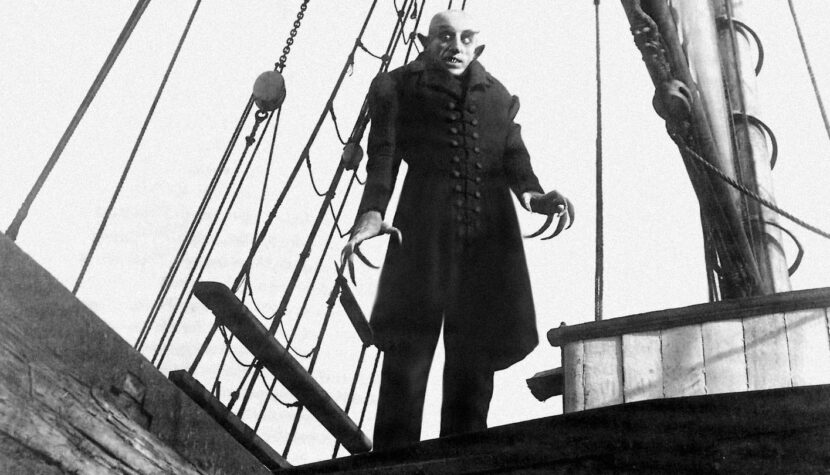
In 2022, we celebrated the centenary of the illicitly produced Nosferatu. There is something incredible about it – while watching such a masterpiece, we not only engage with cinema but also with history. I am convinced that a hundred years ago, no one foresaw the immense impact that the film by German director F.W. Murnau would have on the horror genre. Even from today’s perspective, Nosferatu far surpasses a significant portion of contemporary horror films. There is no such thing as a jump scare here; the story is profoundly unpredictable, and the realism of the scenes (despite their evident antiquity) fills one with terror and genuine unease. Not without reason, some viewers of that era believed that the actor portraying the titular character was truly a vampire…
Against all odds
The idea for the film emerged in early 1921 when Albin Grau recalled a strange tale he had heard from a Serbian farmer during the war. The man claimed that his father was a vampire, belonging to the undead. The unwavering certainty of the speaker and his belief in the existence of supernatural forces and beings inspired Grau to produce a film about a vampire. This was to be the first work of his newly established studio, Prana Film, whose future he associated with images depicting paranormal entities and occult themes. He immediately commissioned work on a screenplay, which was meant to be inspired by the highly popular novel of that time – Bram Stoker’s Dracula. Since obtaining the rights to adapt the book was simply impossible for the creators, they resorted to a simple trick – changing the names of characters and certain plot elements, such as removing the character of the vampire hunter Van Helsing. This didn’t do much to alleviate the reaction of the book’s author, but more on that later. Comparing the film’s content to the novel, one might get the impression that the changes made to avoid legal conflicts worked in favor of the production. Without the presence of battle-hardened vampire hunters, the on-screen conflict seems much more hopeless for the heroes and terrifying for the viewer. The titular antagonist presents himself as an unstoppable force.
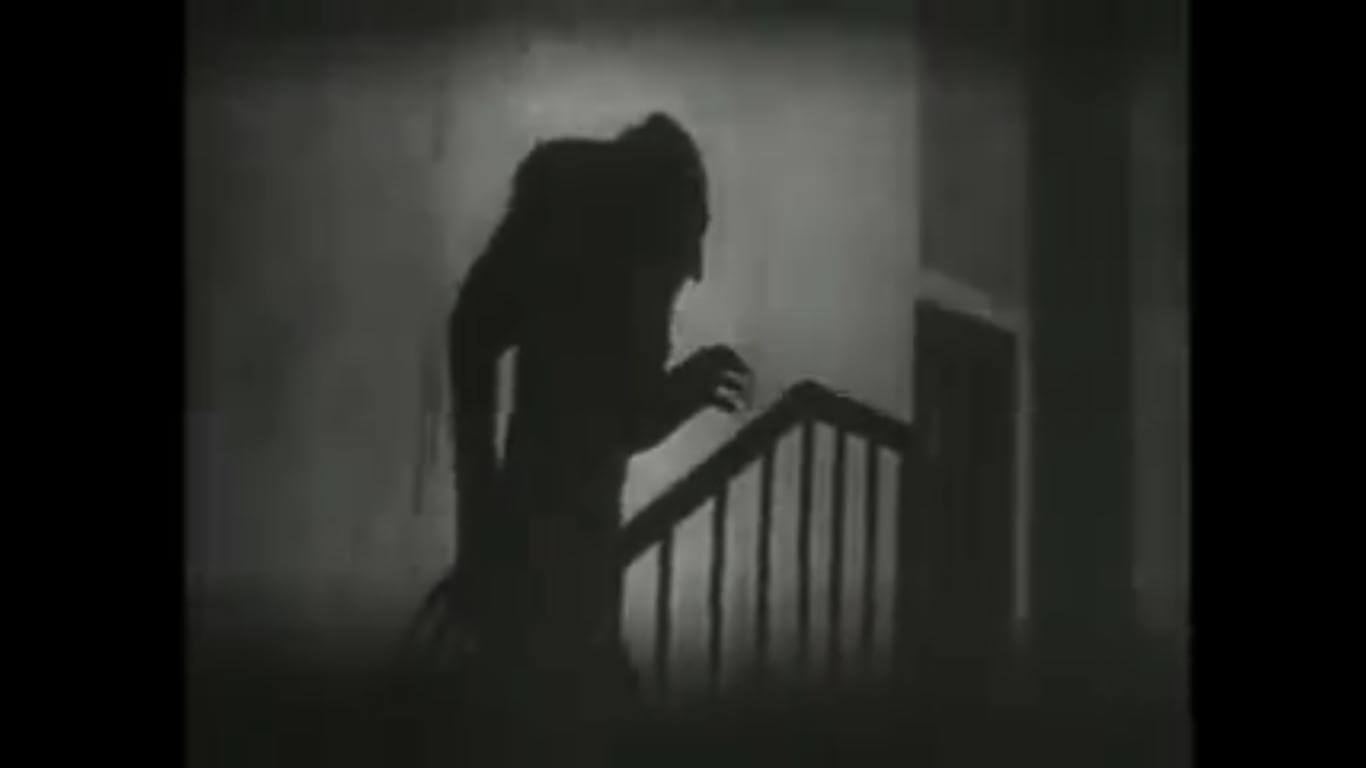
Filming began in the summer, and due to a limited budget, most of the shots were captured on location in Germany and Slovakia. Instead of renting a studio and constructing elaborate sets, they decided to utilize existing elements of the landscape. Undoubtedly, the production benefitted from this approach – the authenticity of the visuals is one of the biggest strengths of Nosferatu.
However, lack of funds and guerrilla-style shooting didn’t mean that the film’s production was one big improvisation. On the contrary, Murnau had very specific visions for most scenes and shots, including lighting and precise actor positioning. The cinematographer followed his meticulously written guidelines, faithfully translating the director’s vision to the screen. Nonetheless, the entire arduous effort was close to being in vain. Bram Stoker’s lawyers sued the film studio immediately after the production’s premiere, and in the face of the accusations, the film was pulled from cinema screens. The court ordered the burning of all copies of Nosferatu and its erasure from the history of cinema. Fortunately, it was already too late for that – one copy had made its way into the world, and nothing could stop it. Prana Film collapsed, but over the next decades, the film gained an increasing number of devotees, becoming a true cult object.
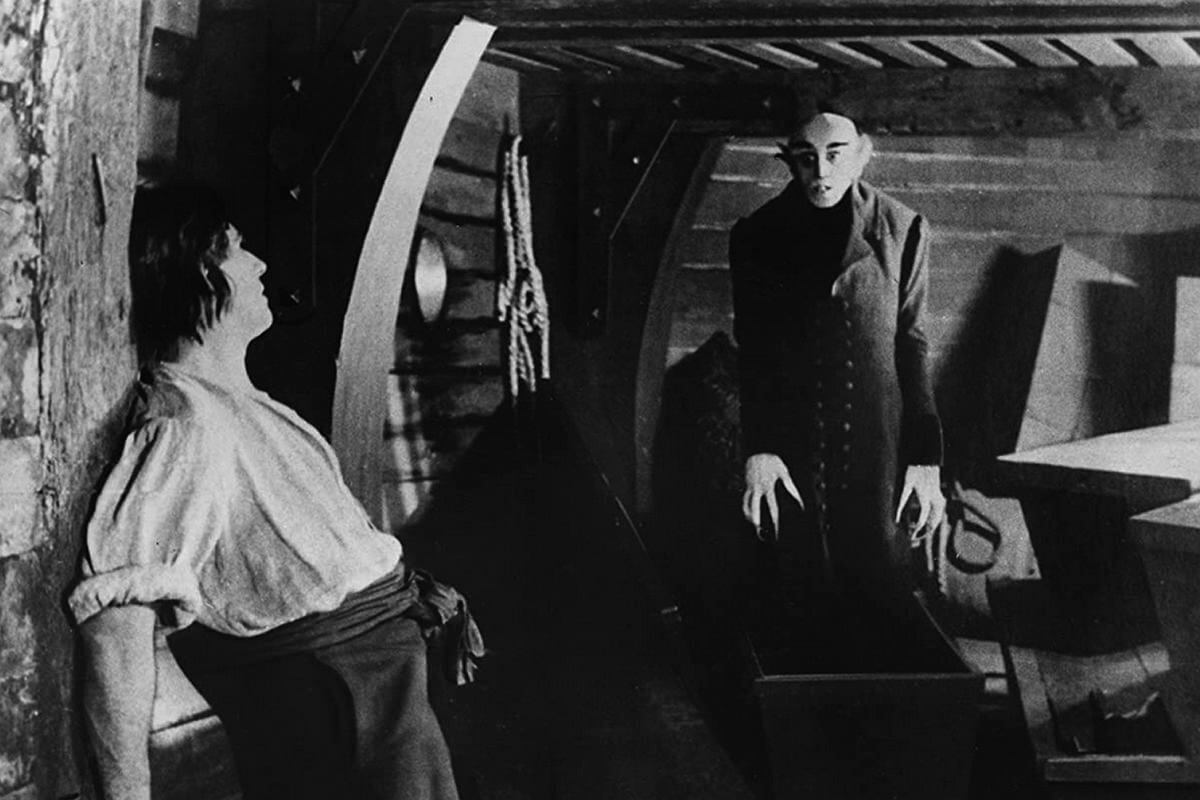
A plot
The main character of this dark tale is a young employee of a real estate agency. Hutter is a likable and somewhat thoughtless man, making it hard not to root for him. One day, he is sent to Transylvania to finalize the sale of a property. The journey itself raises serious doubts (and simultaneously invokes scenes from countless later horrors) – the innkeeper where Hutter rents a room finds an old book about vampires there, and the people he encounters advise him against staying at the castle. His companions eventually refuse to continue the journey, leaving our protagonist entirely on his own. When he finally reaches the castle, it becomes evident that the legends about the host didn’t come from nowhere. Count Orlok has an incredibly unsettling appearance, and initially gullible Hutter gradually begins to see the connection between the behavior of the eerie man and what he read in the old book.
Although the first act of the story largely duplicates the content of the novel, after Hutter’s escape from the castle, additional differences and deviations start to emerge. An extremely interesting and accurate idea was the introduction of the bubonic plague epidemic, caused by rats brought from Count Orlok’s castle to the protagonist’s hometown. This motif effectively played on the fears of the contemporary audience, which still remembered the deaths caused by this disease in the 19th century. Just a few years before the film’s premiere, the Spanish flu pandemic had also occurred, killing more people than the entire First World War. Murnau replaced the aspect of vampire transmission through biting with the literal spread of a terrifying disease. However, the character of Nosferatu symbolizes more than just the Black Death. The entire subplot focused on Count’s fascination with Hutter’s wife carries a strong erotic undertone, which was picked up by later creators who made their vampires more elegant and sensual (reaching extremes like Twilight, True Blood, or The Vampire Diaries). Orlok clearly sees more than a source of sustenance in the woman; in the final scenes, she surrenders herself to him in a highly ambiguous manner. Her sacrifice results in the demise of the monster, who, in his desire, forgets to retreat to his coffin before the coming of day and evaporates in the rays of the morning sun. This is not the first nor the last time in cinema that fascination with a beautiful woman leads to the downfall of a monster.
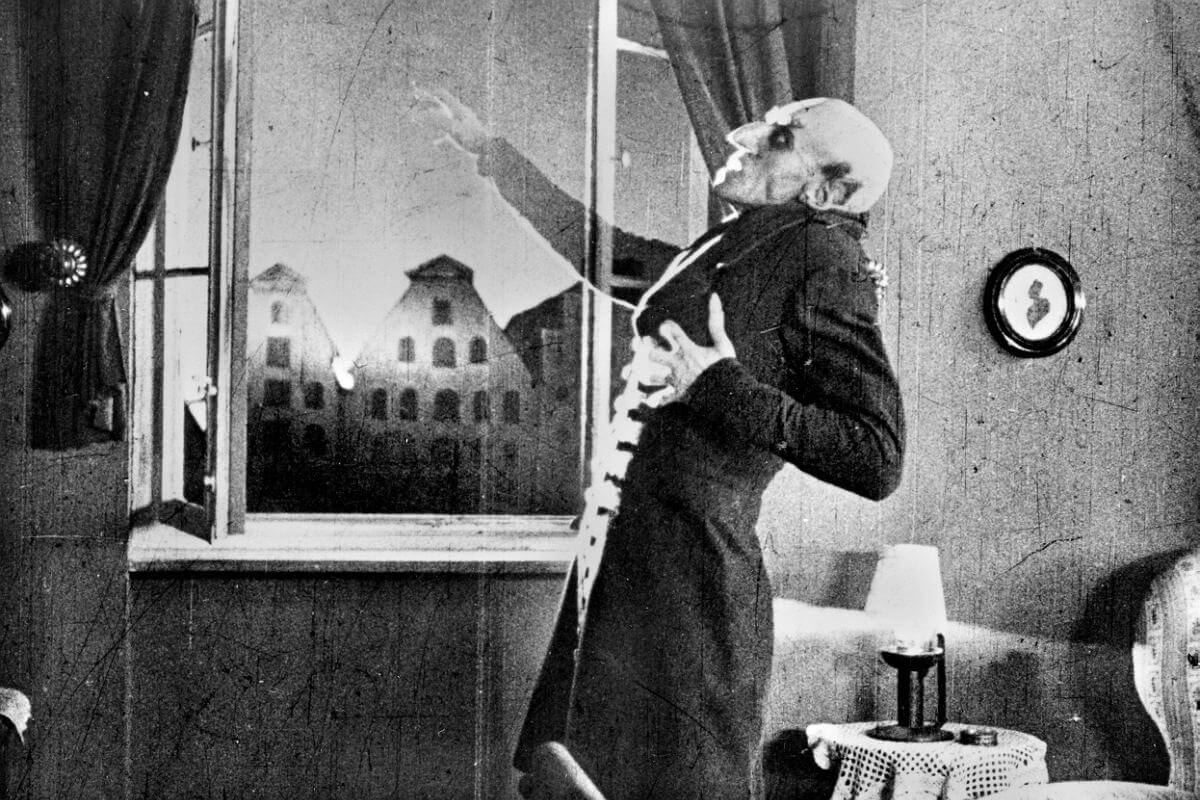
A vampire
The creature itself is probably one of the most terrifying individuals to have haunted us on screen. Max Schreck (interestingly, his surname in German means “fear”) used his manner of movement to create a being that instills greater unease than most contemporary monsters. Flawless makeup was also a crucial factor, allowing the actor to appear monstrous yet human enough not to seem implausible. Both the appearance and the movement of the character were meant to evoke a bat, and this was undoubtedly achieved. The character of Nosferatu is exceptionally unsettling as well – he is unaware that his behavior is immoral, that others do not deserve the harm he inflicts upon them. He simply follows his animal instinct, an uncontrollable hunger that compels him to attack and kill.
He’s a parasite in human form. He probably wouldn’t be as frightening if it weren’t for the phenomenal work done by the director and cinematographer. Every frame in which Orlok appears in his demonic form is a true masterpiece. The play of light and shadow, composition, set design – all of these elements create a stunning impression even today. It’s hard to remain indifferent to a display of such remarkable imagination and creativity. One can also see inspiration from theater (specifically from Max Reinhardt’s theater, which served as inspiration for Murnau and other German expressionists), and this wonderfully aligns with the film’s themes. This influence is particularly evident during the scenes inside the castle, which are undoubtedly the most extraordinary part of the work. It’s precisely then that Reinhardt’s innovative lighting techniques come into play. However, all of this would have been in vain without the true directorial prowess.
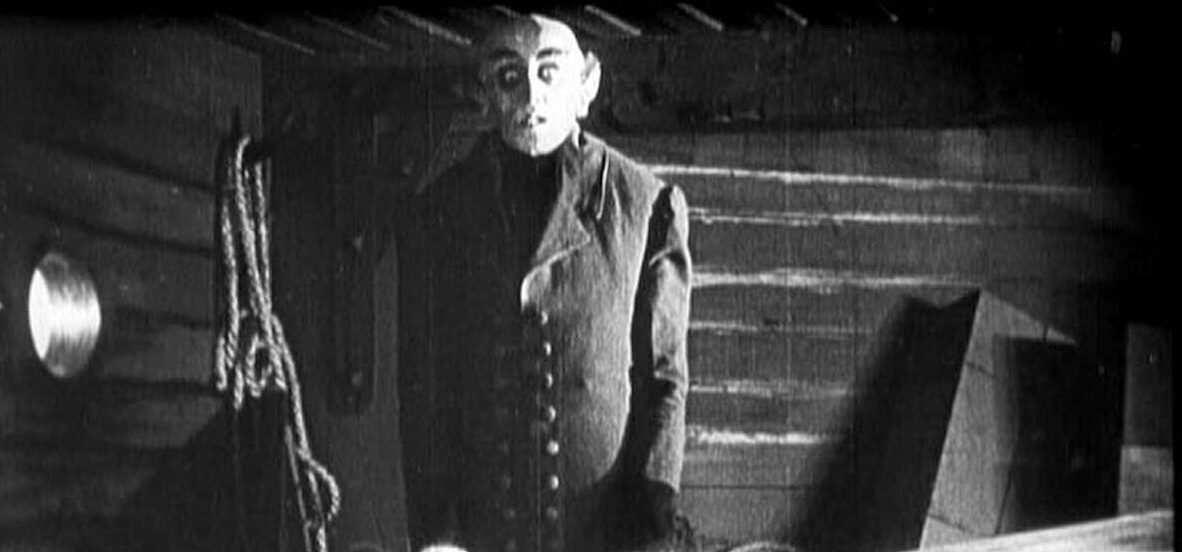
Vibrant movie
Murnau could have easily squandered the film’s potential by reducing it to a silly chase and physical struggle with the monster. However, the creator of Nosferatu decided to leave much in the realm of speculation and imagination. We don’t see how Count Orlok attacks the sleeping Hutter and sucks his blood – instead, we see Hutter waking up to find two small wounds on his neck. We are not shown the fate of the ship’s captain, whom the monster takes over in the second act of the film. We witness the terrified man following the approaching undead figure with his eyes, and shortly afterward, there is a cut, followed by a caption stating that the ship has a new captain. There are more such ambiguities, and they play a significant role in creating the horror. Moreover, the director is adept at imbuing even seemingly ordinary shots of nature with fear – a sense of otherness in the visuals and the presence of dark forces accompany the viewer throughout.
No wonder Nosferatu is still a vibrant film in the contemporary world. It continues to be discussed and written about (clearly), and its inspirations are very evident across popular culture, not just in the horror genre. It’s a must-watch for every horror fan and actually for anyone even remotely interested in cinema. Live music screenings of the film are held every year. It’s a fantastic opportunity to catch up on what you’ve missed, although I’m not sure if experiencing this horror alone in the comfort of your home isn’t a better option. Next, you can delve into Werner Herzog’s remake and sink your teeth (fangs?) into another version of this tale. There’s no doubt that this terrifying masterpiece from over a hundred years ago will forever remain alive in our culture.
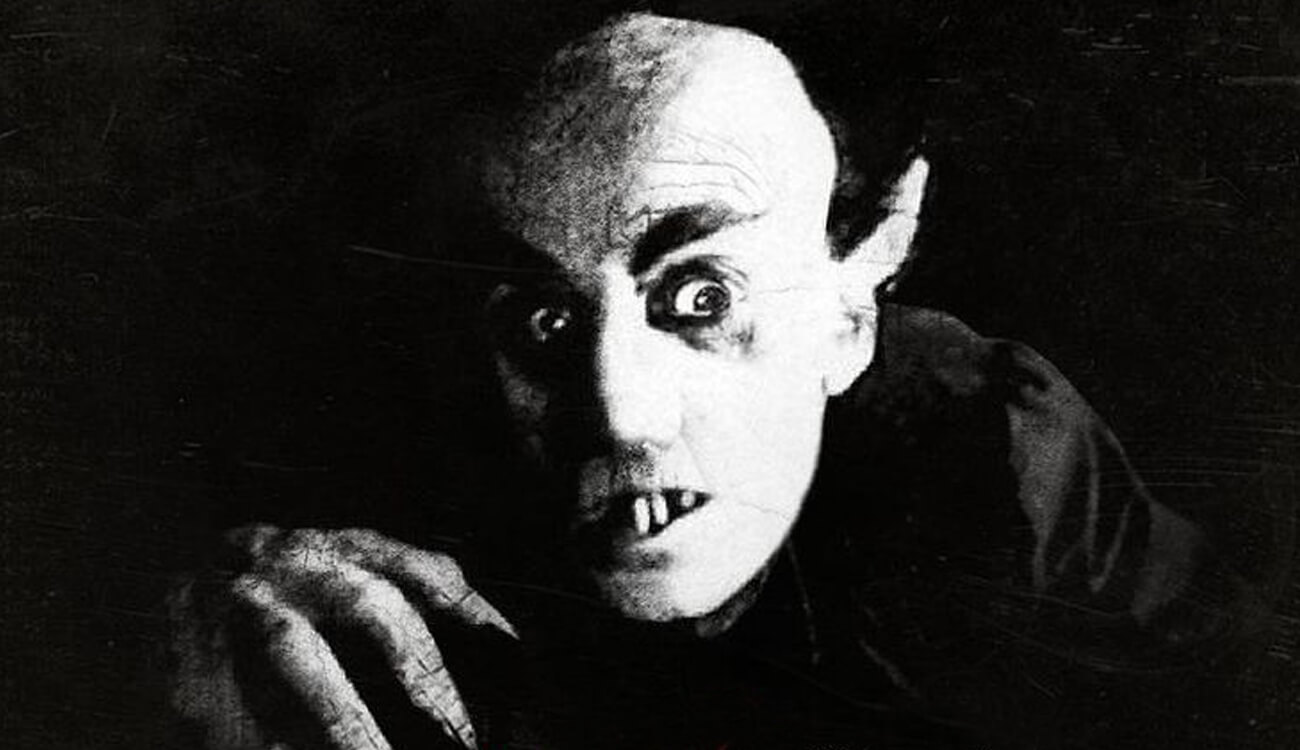
A chilling curiosity to wrap up: in July 2015, unknown culprits entered F.W. Murnau’s grave and stole his skull. Wax traces were found around the grave, sparking speculation about whether the theft was part of some occult ritual. Neither the perpetrators nor the skull have been located to this day.


